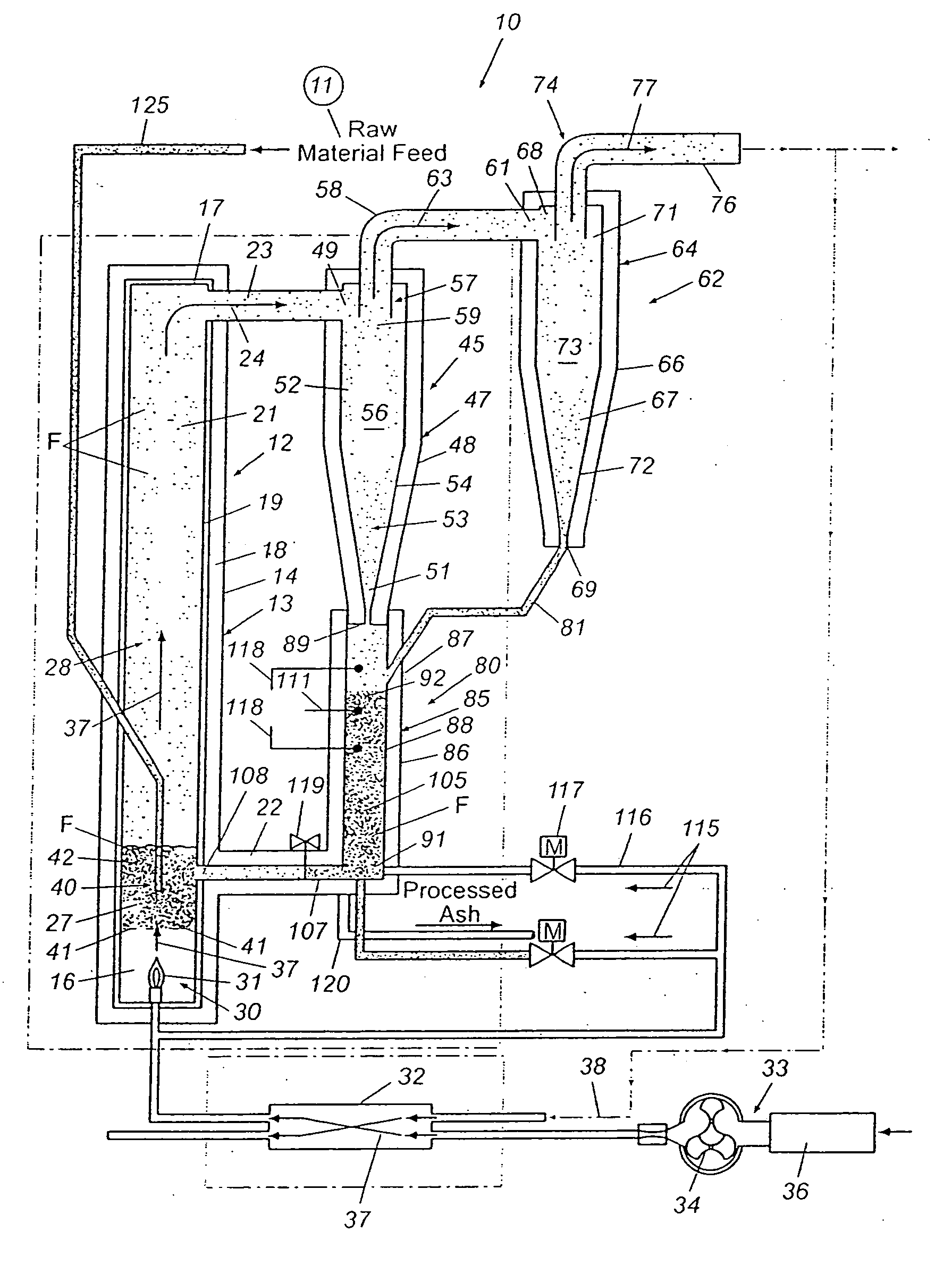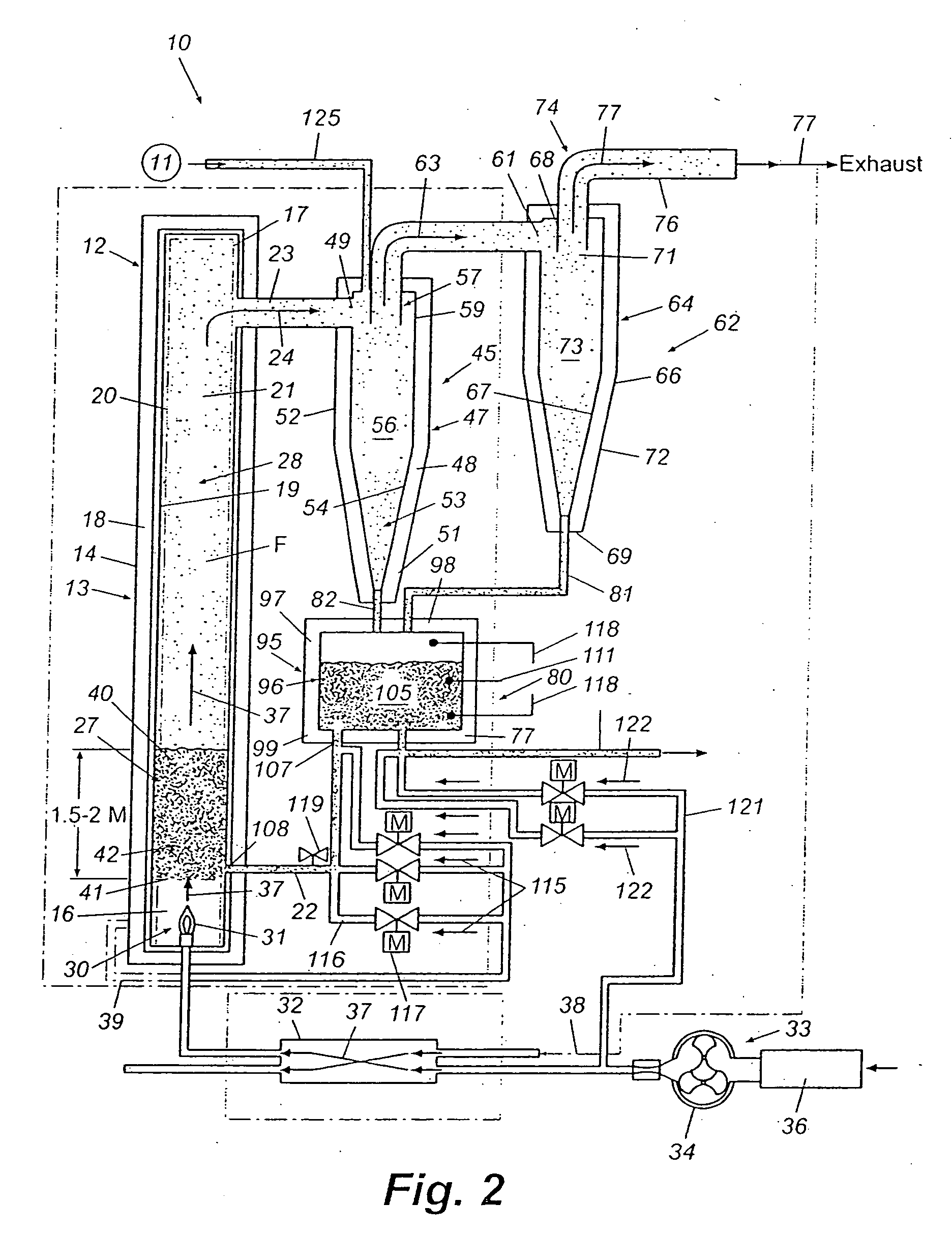Method and apparatus for combustion of residual carbon in fly ash
a technology of residual carbon and fly ash, which is applied in the field of fly ash processing, can solve the problems of reducing the usefulness of ash as a byproduct, and increasing the processing cost per ton, so as to reduce the levels of residual carbon, reduce the level of carbon remaining in the ash, and ensure the effect of combustion
- Summary
- Abstract
- Description
- Claims
- Application Information
AI Technical Summary
Benefits of technology
Problems solved by technology
Method used
Image
Examples
Embodiment Construction
[0022] Referring now in greater detail to the drawings in which like numerals indicate like parts throughout the several views, FIGS. 1-4 illustrate systems in which fly ash can be processed in order to reduce the concentration of residual carbon. As shown in FIG. 4, the present invention encompasses a system 100 including an array of combustion units 110, 111, 112 in which fly ash can be processed, such as by combustion, to reduce the residual carbon of the ash. Although system 100 is shown with three combustors or process units 110, 111 and 112, the array generally can include two or more units, such that greater or lesser numbers of combustors can be used in the system 100 of the present invention. The combustors 110, 111, and 112 of the array generally comprise batch loaded circulating fluid bed combustors (CFBC) that comprise dilute phase ash combustor (DPAC) units, as shown in FIGS. 1-3 and described herein, positioned in spaced series along an ash transport line or path 160 f...
PUM
| Property | Measurement | Unit |
|---|---|---|
| temperature | aaaaa | aaaaa |
| temperatures | aaaaa | aaaaa |
| velocities | aaaaa | aaaaa |
Abstract
Description
Claims
Application Information
 Login to View More
Login to View More - R&D
- Intellectual Property
- Life Sciences
- Materials
- Tech Scout
- Unparalleled Data Quality
- Higher Quality Content
- 60% Fewer Hallucinations
Browse by: Latest US Patents, China's latest patents, Technical Efficacy Thesaurus, Application Domain, Technology Topic, Popular Technical Reports.
© 2025 PatSnap. All rights reserved.Legal|Privacy policy|Modern Slavery Act Transparency Statement|Sitemap|About US| Contact US: help@patsnap.com



